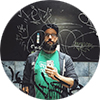Social media and beer go hand in hand. Brewery openings are announced on Facebook, new beers are introduced on Instagram, and breweries chat with their customers on Twitter. If it wasn’t for rabid fans checking in on Untappd or spreading the word of the last amazing beer they had some breweries may not have experienced the successes they have. But what makes a Twitter account worth following or a Facebook post exciting? We asked the Fervent Few what they love and hate about breweries on social media.

Brad Redick: “I like following brewers or people representing themselves and not just the brand. They've all been kind enough to indulge my beer-nerd questions. They advocate for the industry overall and they do well by representing their localities.
I love it when breweries share the information about their soon-to-be-released beer. The recipe, the motivation for brewing the beer, the food pairing, everything. The more info the better.”

Robbie Wendeborn: “I follow a lot of breweries, some local, some from Southern Colorado, some breweries I fanboy for, some breweries of friends. Most are not that interesting if you're farther away, but I find that following brewers themselves to be most interesting. You find out more about the day to day life of the brewery, learn more about the vibe of the brewery, and feel a little more connected to their beer, even if you've never had a sip of it.”

Scott Metzger: “From the perspective of the brewer, I find Twitter to be one of, if not the, most raw and unfiltered modes of engaging with the people in my orbit—whether it be fans of our beer, friends in the industry, or people I don't know in the industry. While 140 characters can be a limitation on engagement, I find it actually encourages engagement because it can be done in small, easy bites.”

Paul Donald: “I follow a few breweries on Twitter. Cloudwater are excellent on social media. Over the weekend that had to do a product recall and they did it brilliantly. Honest and upfront with their customers and a real sense of regret but we're not going to take a chance with hiding it.”

Aleksi Friman: “Allagash has been mentioned before. They seem to keep conjunctive thread on their Instagram account which has a perfect balance on introducing the beers, getting a grip of the location, and the story of the brewery.
Instagram's story option is great addition to introduce brewery´s daily life and the workers there. Short informal snaps which complete the big picture.”

Alex Marino: “Pipeworks is pretty great on Snapchat. They do stories about their weekly distro and use a lot of props to make it more fun than just 'hey, we canned some more Lizard King.' They inject a lot of their personality into it.”

Neal Buck: “I was just thinking about this a few days ago when I finally broke down and got a Twitter account. I started off by following a lot of the same breweries I already followed on Facebook and Instagram. But I quickly realized that they were just posting the exact same content in all three places, so I unfollowed them.”

Kian Oveissi: “An account that has stood out to me recently as it relates to voice carrying through from their Instagram posts to their Instagram story is Fair State. It's an account where you can quickly glance at a post or a story and know it's Fair State without seeing the handle or even if one of their products isn't directly pictured.”

Threefrenchs: “I follow social media on breweries for a few reasons:
1. They are entertaining.
2. They are local and I like to keep up to date on what they are up to.
3. They are breweries that either I just plain love or hope to visit."

Caldwell Bishop: “ My strategy thus far, and my plan for now at least, in regards to breweries, is to follow local breweries whose beer I enjoy—my goal being to stay abreast of events they might have on site, beer releases i'm interested in, and to learn a bit more about the brewery itself/the people behind the beer.
But as much as anything, for me, it's about finding a reason to go to brewery X over brewery Y on any given weekend with friends. So maybe it's that X is having a cool event, or a new release, or maybe I want to support them, the image they project appeals to me/friends (DC example: Right Proper), or because I've had a good interaction with them on social media. A recent/easy example of the latter for me: I was in Baltimore last weekend and wanted to stop at a brewery on the way home. Zach Kaiser engaged with me on [Slack], told me about Diamondback, and was willing to put up with my Qs about the city in general. So out of curiosity, and because I really appreciated the interaction, that's where we stopped on our way home. The beers were good and we'll definitely be back, but as I'm moving a block away from another brewery of sorts, if I hadn't had that interaction it'd be super easy to not venture to a place a bit further away. I appreciate the personal engagement and I think that social media is what gives breweries the potential to differentiate themselves from another place in a crowded market.

Jim Doolittle: “I think what I'm getting out of this topic is that I've finally found a good use for the mostly-ignored Instagram account that I have: breweries! I follow some beer folks on my main Twitter account, but that account is so cluttered up with personal friends and my own professional stuff these days that I have a hard time keeping up with it some days. I probably won't be following many brewery accounts with it, I'm more interested in following a brewer's account. Less @offcolorbrewing and more @jalaffler, if you guys get that. Brands on Twitter are honestly not the main reason I'm on Twitter.”

Joshua Carnell: “Social media is key. There is nothing worse in my mind when I see a brewery that only has a Facebook page. I find Instagram to be the easiest way for a brewery to get things across. It is an easy way to showcase new beers, events, and special releases.”

Nate Wannlund: “Social media to me is where a brand goes to live or die. If a brewery knows who they are and, more importantly, who they are not, it will shine through on social media. I love following breweries who are true to themselves and use each social channel in a way that is brings that unique personality through. I don't want all breweries to be the same, my feed would get very boring. Brands who create 'speed bumps' for my thumb stay in my consciousness and the others fall to the wayside. On the flip side of all that, if a brewery does not have a great grasp on their brand, social media brings that out quick! Unlike media of the past which was very one-sided, social media allows for a two sided conversation and reaction. I love when breweries show they are human behind all the filters.”

Nick Naretto: "There is a newer craft beer wholesaler in the Pittsburgh area (Steel City Beer) that has two different accounts. One highlights all the new beers and brands that they have. The other is used by the delivery drivers and they snap a picture of each beer delivery and share what it contained and where they delivered it to."

Many of our members this week not only debated for Twitter vs. Instagram but also gave great advice on why they choose one platform over the other or more often what they expect to see on each service.

Lamar Walker: “I follow several breweries/brewers/bars on Instagram and Twitter. I prefer Instagram because for me interesting or high quality photos are more engaging and personal. Additionally, for the better accounts there is usually good information about upcoming releases, tap takeovers or events, etc. Although Instagram may be my favorite because it's photo-based, I also enjoy the commentary, news and/or discussion by industry people that I follow on Twitter."

Alex Marino: “It really depends on the social media channel. On Twitter and Facebook, I'm looking for information on new releases and upcoming events. On Instagram, I'm just there for the photos. I've seen some breweries that RT BeerMenus posts about their beers going on tap at random bars. I wouldn't normally care about that, but in this one case, it was a large percentage of their tweets and it was mostly their flagship stuff. If a really cool beer goes on tap somewhere then I'm all for getting the word out but if you're someone like Goose Island (as an example) you don't need to tweet out that 312 is now available at a random bar in Minneapolis.”

Kristen Foster: “I find Twitter to be the place I go to for industry news, debate and conversation, and to follow specific people (i.e. brewers, writers, etc.) to hear their perspective. Less for engaging with a brewery or hearing news about events. It's hard to pull out that type of info from the onslaught of things being tweeted/retweeted about everything at the brewery (agree with pet peeve about retweeting when something is on tap, Maine Beer Co is an offender, although I love them).
Instagram is the space I tend to follow breweries for info, events, and great design and photography. Also think breweries I love use it for education since they aren't limited to 140 characters. I follow breweries both local and not. And even ones whose beer I have never tried or breweries I've never visited purely because I like the way they engage their community and following or think the photos are beautiful. They become places on my list to visit because I get a feel for them visually and can gauge the experience. I like stories on a limited basis. For example to cover a special event or a trip the owners or brewers take. Not my fav for everyday engagement or to constantly update on every single moment of the day.
Don't do Facebook for beer. Not sure why. Never have.”

Daniel Blakely: “Instagram has become my favorite to use for breweries specifically, and the Instagram story allows for the "behind the scenes" pieces that Snapchat was attempting to capitalize on. What I haven't seen enough of from my market: social media paid advertising. A handful of groups have done it and it immediately catches my attention (partially due to me being a marketer myself). Festival tickets are the most obvious use (to me) but I've only seen one campaign in my area for those.”

Nick Naretto: “I follow a decent amount of breweries on social media but enjoy and use Instagram the most. I typically only follow breweries that distribute to my area or that I’ve drank before. This helps cut down on the endless scrolling and I find it torturous to have to look at beers that I can’t get distributed to my area. On Facebook I only follow local breweries because this is where most of them seem to be active. I will go on Facebook to see what times they are open, if they have any events going on or even to keep tabs on the progress of a new brewery that is launching. I do have Twitter, but can’t honestly remember seeing a beer tweet that I really cared about or that I didn’t already see elsewhere on social media. I am not too picky about the content, but I find myself avoiding accounts that have cookie cutter posts. One type of post that comes to mind is the National 'Whatever' Day and all of the posts with beer sitting next to a random thing that doesn’t really have anything to do with the beer. It can also get pretty boring if the brewery just posts endless amounts of pictures of their beer poured into a glass and sitting next to the packaging. I’m ok with that type of content every so often but chances are that I already know what that looks like and I don’t find it exciting. Ideally I like accounts that share a look behind the scenes or something that I can’t easily see myself in my daily life.”

Zack Rothman: “I follow a lot of breweries, whether or not they're local, on Instagram and Twitter. For Instagram my main interest is quality photography. A great shot of a beer with some proper glassware or a nice background really gets me engaged. I follow breweries on Twitter mainly for the discourse and updates. I like that I can have a direct online interaction with brewers and get a response from them. If I don't check a brewery's Twitter sometimes I do feel like I'm missing out, especially when a special event or release is announced.”

Here are a few reason’s why sometimes we break up with breweries over social media.

Neal Buck: “I was just thinking about this a few days ago when I finally broke down and got a Twitter account. I started off by following a lot of the same breweries I already followed on Facebook and Instagram. But I quickly realized that they were just posting the exact same content in all three places, so I unfollowed them.
What I really don’t like on social media are constant posts about flagships. IDGAF who’s drinking Brewery X’s flagship IPA on a craggy hillside somewhere. The location does not make the beer more interesting. Social media is all about what’s new, I think. Post about your new beers. Post about releases. Post about process. Keep it interesting. Then again, I’m definitely not the target audience for those kinds of posts. I guess there are folks out there who have two shits to rub together about that stuff. I do not.”

Andrew Nations: “I love the brewery Twitter accounts that log in, RT about two dozen Untappd checkins in two minutes, then go away. Twenty four hours later, the same. When social media feels like a chore....yeah...the content can't be good.”

Mike Sardina: “One real-world example of a hashtag that I've used that actually 'meant' something to folks was at Societe. We brewed two different American IPAs, one called The Apprentice and another called The Pupil. Both had the same ABV and roughly the same grist, the difference between the beers was predominantly the hopping schedule. I'd associate #teampupil and #teamapprentice (a riff on the Twilight meme of TeamEdward and TeamJacob). Our passionate fans embraced it and started using the hashtags frequently themselves, we even had stickers made for each of the beers. Almost like an internal competition between the two beers, with everyone on the same team and rooting for Societe... Not sure if it was effective from a marketing standpoint/metric, but passionate fans were engaging and running with it. I found it to be rewarding, fun, and somewhat cool.”

Shannon Crawford: “We try to use hashtags that haven't been really used before so things don't get lost in the noise. Folks will always use it to whatever end they want. That's kind of the problem and beauty of social media—everyone can use it (yay) and everyone can use it (ugh). It's democratizing, but there are a lot of crazies out in the general public. I find those really sexualized photos kind of funny and dumb but not super offended by them. We haven't had any complaints yet or anything. I think most folks realize we can't do anything about those. The cool thing is that we can choose to like and share what we want. So if anyone did any digging they would see that we didn't go and like that one stupid post and that we don't really condone it.”

Travis Wannlund: “Bottom line, social needs to be engaging. It starts with one question: What does your customer want to see from you? That may be very different than what you want to tell them. If you don’t know what your community wants to see, that is where you start. There will be some common threads between all users but generally, it should be tailored to the following of that brewery.
Step two is how do you tell them what they want to hear? This is a question of tone, content type (photos, videos, text, owned content, user generated, etc.). This is also a question of access. Do you post replies in the comments? How often? What do you reply to and how do you do it? All of this is social content.
Once you’ve dialed in what your community wants and what they will react to, now comes the value question: What do you want to tell them and, knowing the above, how are you going to build that message with your new-found knowledge? Now it’s time for a content marketing strategy! Most don’t make it to this step because they have 1,000 other things to be focused on.”

The full Slack conversation about social media this week was fantastic, full of great conversations we don’t have the space to post here. Needless to say, a lot of brewers learned a lot of things about utilizing social media to make their followers happy and maybe earn some new ones. For this week’s article we are going to leave you with our founder Michael Kiser and this anecdote about impression vs impressions.

Michael Kiser: “I've found that interaction and memorability don't always go hand in hand. The easiest success to predict for us is likes for barrels. Or a bottle of some whale. They consistently outperform all other photos in terms of likes and shares. But those are never the images that people mention when they see me. And they don't help people understand who we are and what we do. They're the detritus of our culture rather than the culture itself. The photos people recount to me, sometimes even a year later like a good book they still think about, are the shots of a place and a person that changed their minds, or opened a world to them. These are almost always images a person in the midst of some meaningful or gracious act—brewing, serving, hugging, lifting sacks of grain, waking through their brewery or over their land, malting, farming, eating...the little moments that make the process and experience so human. It makes the faraway feel immediate. And that aligns with GBH's goals. So even if those photos don't perform in terms of analytics, I know that qualitatively they're sticking in people's brains more profoundly. To me that's how you set goals as a brand over social media. If you can find a way to measure how impactful a photo was in its memorability or how much understanding of your company it communicated to your audience, that'd be the new gold standard—not likes. That's impression vs. impressions for me.”










